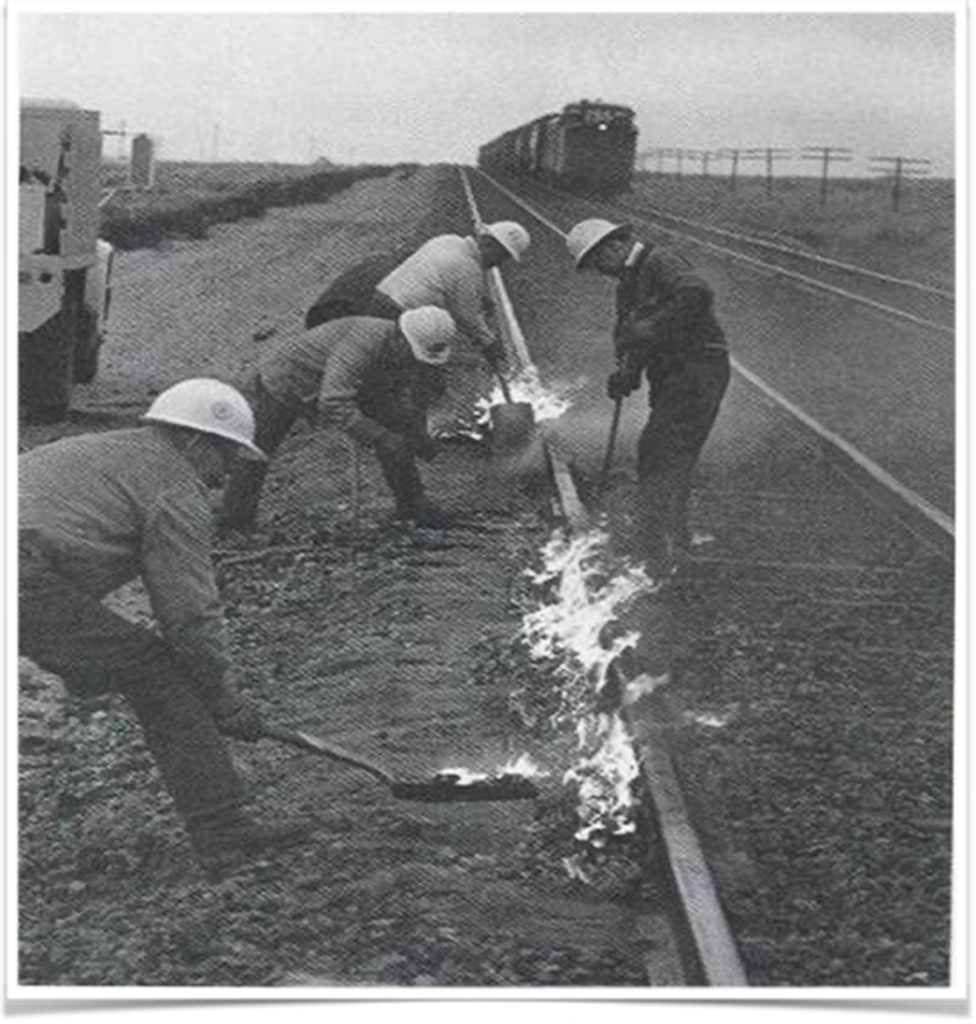
With a westbound freight receding into the horizon, a Santa Fe section crew at Walapai, Arizona, resumes its work, connecting cold rail. The men have ignited scraps of wood to expand and lengthen the cold steel rail on a rainy December 1977 afternoon.
They have replaced this rail. If you look closely, this is jointed rail, 39 foot lengths unlike continuous welded rail you would find in mainline operations today. Why 39′ rather than a nice round number like forty? Two reasons: “That’s the way they always were, but more importantly, they fit nicely on relatively those short forty-foot flat cars of years gone past.”
You can see the outside fishplate and joint at the feet of the worker standing inside the rails holding a long open end wrench. When the rail expands and the holes line up, his partner will slide in two bolts through a fishplates sandwiching the rail ends. He’ll then place a washer and square-headed nut, whereupon the open-ended long handled wrench will cinch it down tight.
Those joints provided the clickety-clack that was music in years past whether in coach or Pullman sleeping cars. Today the welded rail gives a better ride, is safer, quieter, less maintenance intensive, but I still like the clickety.
photo credit: Dave Stanley as seen in TRAINS 100 Greatest Railroad Photos
Submitted by Gary Ostlund
